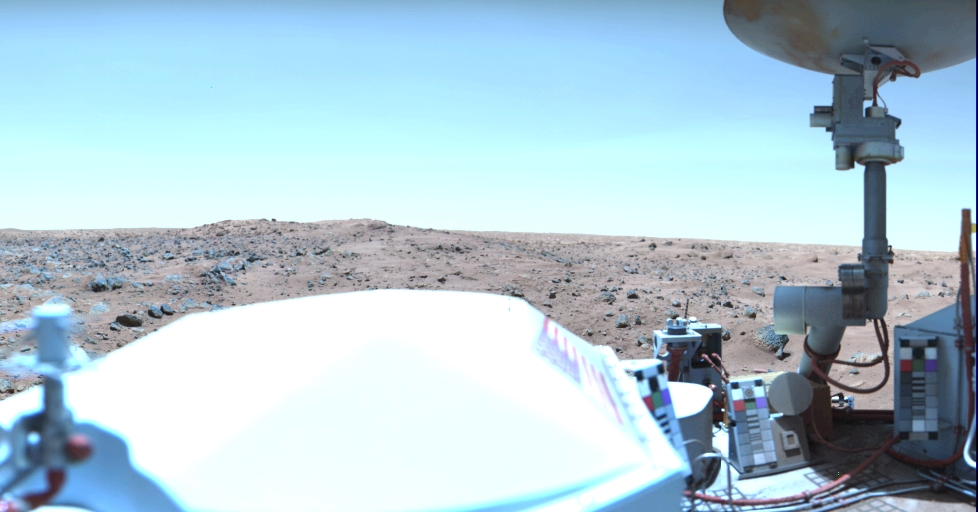Physicist: The blue of the sky is sunlight that has been scattered by the air in a process called Rayleigh scattering. The probability that a photon of frequency is scattered is proportional to
. So purple (the highest frequency we can see) gets scattered about 15 times as much as red (the lowest). The derivation of the “fourth power law” isn’t even a little bit obvious, and explains almost nothing.
So if purple is the most scattered color, then why is the sky blue? While sunlight is a combination of all colors, it isn’t an even combination of all colors. Near the top of the visible spectrum the intensity of sunlight drops approximately exponentially with increasing frequency. These two effects mean that both lower frequencies and very high frequencies won’t be seen in the color of the sky, and in between is a surprisingly sharp “sky blue”.
One of the results of the above argument is that the color of the sky is dependent only on the spectrum of the incoming light, not on the composition of the atmosphere, and as such the sky of every planet in our solar system (all those planets with transparent atmospheres at least) is the same blue. The contrast, however, is dependent on the density of the atmosphere.








That was fascinating! I had no idea about the sky being blue on other planets. So this means that other star systems might have different colours depending on what kind of star is a their centre? So, what colour sky do Alpha Centaurians see? (Or, if I remember correctly, you recently wrote that stars in the same neighbourhood are similar, so blue too?)
Star system that are roughly the same distance from the galactic core have similar proportions of chemical elements. The color of a star however is determined almost entirely by it’s surface temperature (also it’s “absorption spectra” and some “hydrogen lines”), which in turn is determined mostly by its size and age. If a planet can stably orbit in the Alpha Centauri system (which is a trinary system: Alpha Centauri A. Alpha Centauri B, and Proxima Centauri), then it would have a kind of “Tatooine” thing going on and the color of the sky on that planet would change slightly depending on how close it is to each of the stars. I say “slightly” because the two biggest stars are more or less “Sun colored”. If you were near a star like Sirius (the “dog star” to the left of Orion, a blue giant) or Betelgeuse (Orion’s left shoulder, a red super giant) then the sky would be more purple and green respectively. It’s worth looking at these stars because they’re easy to find, and they have distinctly different colors.
Pingback: Q: Why are the days still longer than nights, until a few days after the fall equinox? | Ask a Mathematician / Ask a Physicist
plz I need a better explanation, one that involves math and drawings.
Ummm, the Martian sky is RED during the day, and BLUE during the sunset. So your explanation must be incorrect saying that the color depends only on the incoming frequency and not the atmosphere
On Earth, the sky gets redder during the sunset. Is it because there is more atmosphere for the light to get through (than “from the top”, e.g. during noon), and red frequency goes through while the blue gets scattered? Wouldn’t a denser atmosphere do the same trick?
By the way, this is one my favorite posts of yours.
@Kamil
Thanks!
That’s exactly right. Blue scatters more, so if sunlight is forced to pass through a lot more atmosphere, then the blue light will have far more opportunity to wander back into space or hit the ground (in which case it would be the blue of the sky for somewhere else).
And a denser atmosphere does do the same thing. So, ironically, sunrise and sunset on Mars aren’t as red (Mars’ atmosphere is much thinner) and the sky isn’t as blue during the day.
The third effect is that sensitivity of the human eye itself falls off as you go farther from yellow-green light in either direction.